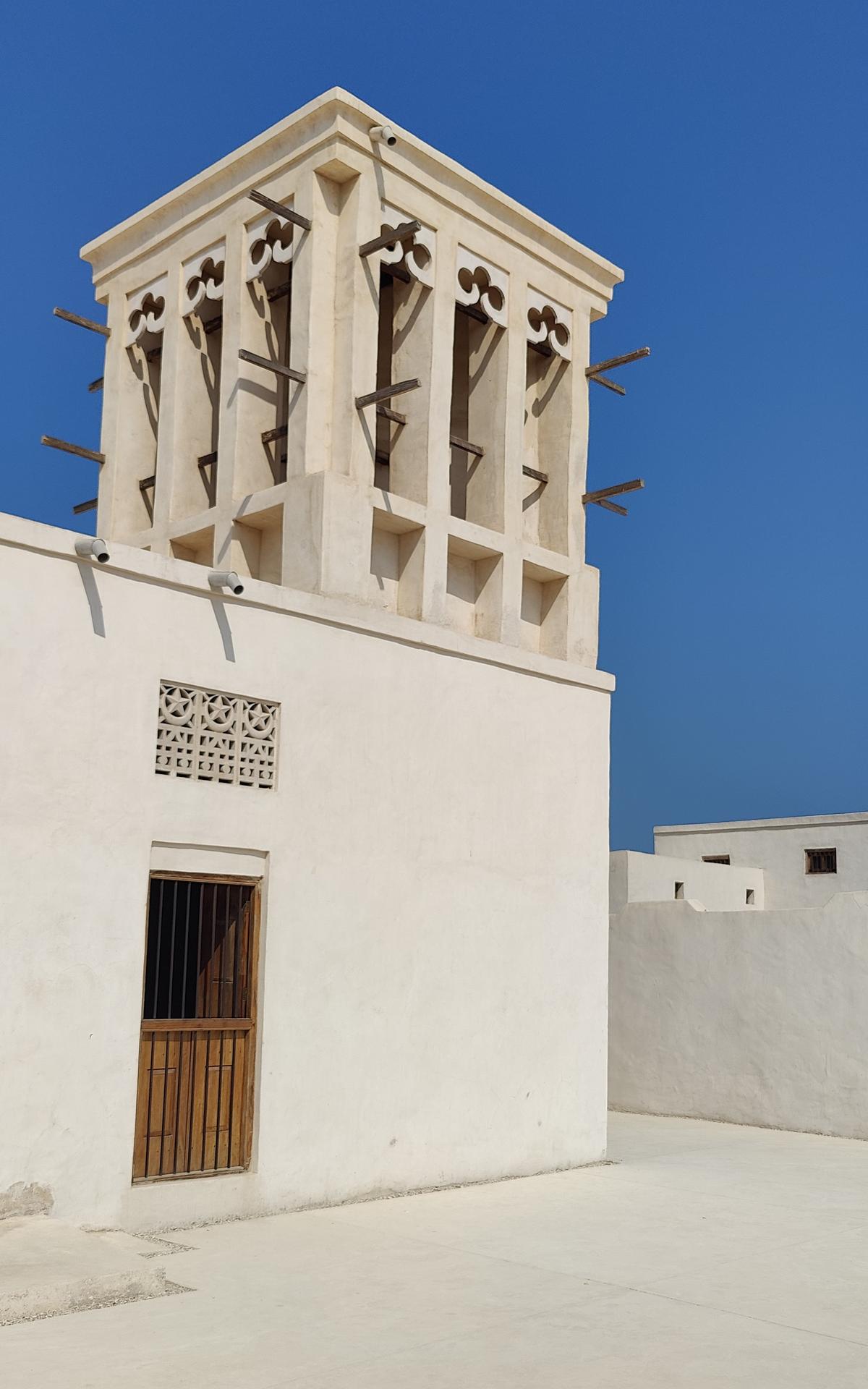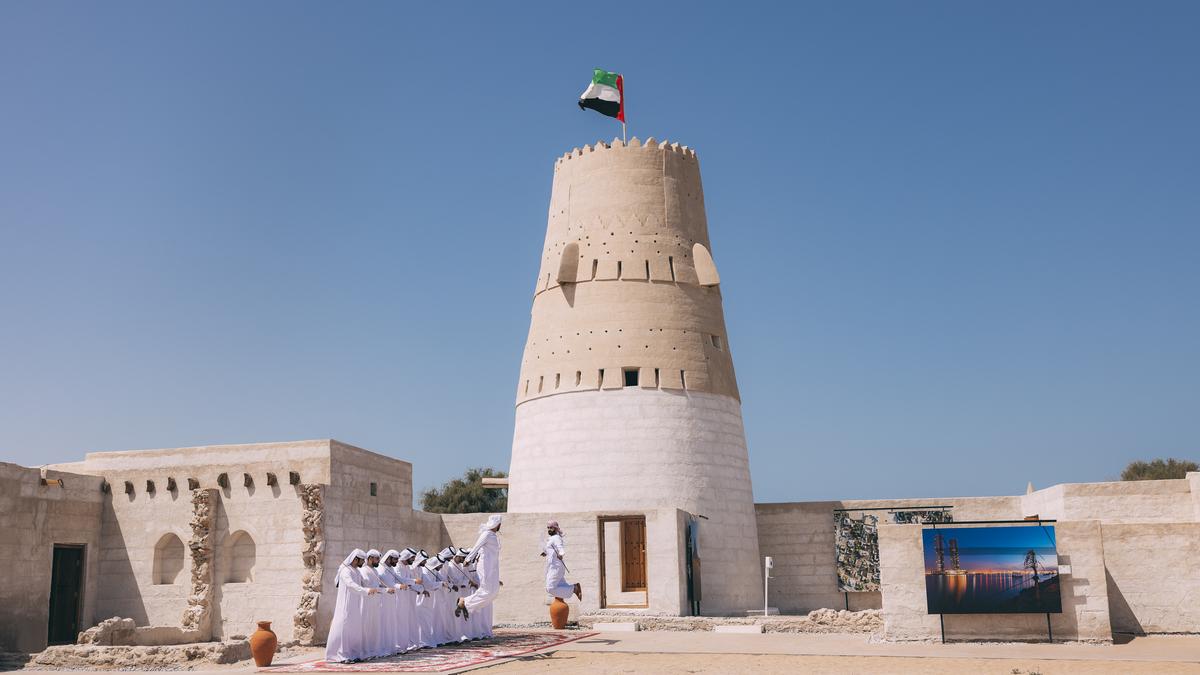On the day that we, a group of journalists from India, step into the Al Jazeera Al Hamra Heritage Village in Ras Al Khaimah, students from a local school are exploring the area, getting to know its history. As we get ready to explore the heritage site, our guide pauses to take another call from a school seeking to schedule a visit for another group of students. “We get a lot of enquiries from schools,” she tells us.
For the unversed, Ras Al Khaimah is UAE’s lesser known getaway where visitors can soak in adventure, history and culture at a leisurely pace, unlike the glitz and glamour of Dubai, Abu Dhabi or Sharjah.
Now on the UNESCO World Heritage Cultural Tentative List (a tentative list is a preliminary inventory of a country’s cultural and natural sites that it may want to propose for World Heritage status in future), Al Jazeera Al Hamra is one of the prime attractions for history enthusiasts. Translated from Arabic, Al Jazeera Al Hamra denotes Red Island. This is said to be the last remaining pearling village in the Gulf region, the rest having been demolished since the discovery of oil.
A part of the village’s ruins have been left untouched, as per UNESCO requisites, while other portions have been restored using materials such as coral stones and sandstones similar to the ones originally used by Za’ab tribes to build their homes and souks.

The origins
As we walk through the alleyways filled with powdery dust, our guide shares the story of how the ancient tribes lived in the region, from the 16th Century till the late 1960s, before moving en masse to Abu Dhabi in search of livelihood and an urban lifestyle.
The Al Jazeera Al Hamra settlement was established in the land of Al Qasimi, the ruling dynasty of Ras Al Khaimah. The region, with its convergence of desert, mountains and coastline, was conducive for pearl farming.
How to get there: Ras Al Khaimah has its own international airport, and is also well connected from the Dubai, Abu Dhabi, and Sharjah airports.
Other attractions: Jebel Jais, Al Jazirah Aviation Club, Dhayah Fort, Bassata Desert Camp, Suwaidi Pearl Farm, The RAK museum, Jais Sledder, Al Wadi Natural Reserve, Golf courses, and Bear Grylls Explorers Camp.
Places to stay: Several resorts dot the 64 kilometre-long beaches. We stayed at The Mövenpick Resort at Al Marjan Island, equipped with over 400 rooms, suites and beach-facing private villas. A floating water park and water sports facilities are added attractions.
The inhabitants
In the once-thriving pearling village, men and women shared multiple responsibilities: as pearl divers, pearl traders, boat builders, cattle farmers, and date farmers. The name red island has its origins from the colour of the sand dunes in the region, when the island was surrounded by a lagoon until the late 1970s before it was filled and connected to the mainland.
The village has a fort with a watch tower, a souk or market area, courtyard houses, and a two-floored mosque, among other structures.
Wind towers built as part of homes allow easy ventilation in the harsh summer months. The summer homes also come with hole-in-the-wall sort of spaces and this porous architectural element facilitated ventilation. The winter homes seem impenetrable, to insulate inmates from the biting desert chill.
“The ancient people knew how to live in tune with Nature and withstand tough weather conditions. The Ras Al Khaimah museum displays several everyday tools used by the inhabitants, including a shell that was used to feed water to infants,” our guide tells us.

Sands of time
In the early 20th Century, this settlement had approximately 500 houses and 2,500 to 3,000 residents. During the hour-long walk through the village, we observe that the village is divided into several quarters to house groups of families. The buildings built using coral stone and beach rock represent the early settlement, while sand brick buildings pertain to the period after 1955.

A closer look at one of the constructions with in-built wind channels
| Photo Credit:
Sangeetha Devi
The souk, which now wears a deserted look, was once a bustling trade centre with camels and donkeys being engaged to transport goods from the port to the trading centres.
“The pearl industry witnessed a decline since the early 20th Century as cultured pearls changed the market. Following the discovery of oil in the UAE, by the late 1960s, the village inhabitants moved to Abu Dhabi in hope of better jobs, water and electricity,” adds our guide.
The abandoned village, with its heritage trails, has been conserved and preserved as a reminder of the historical pearl trade. The conservation and restoration work is governed by The UAE Ministry of Energy and Infrastructure and the Department of Antiquities and Museums, Ras Al Khaimah.
(The writer was in Ras Al Khaimah on invitation)

